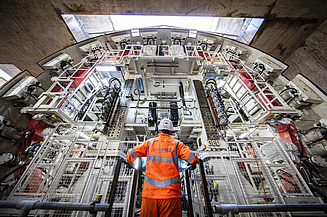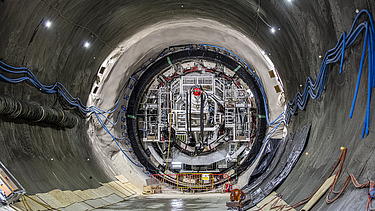HS2 reveals giant tunnelling machines ready for 4.5-mile drive to Euston

Weighing an incredible 1,250 tonnes, each of the tunnel boring machines (TBMs) will launch from an underground box at one end of the project’s Old Oak Common station. They are expected to take around one and a half years to reach the railway’s final southern terminus at London Euston.
As well as taking passengers closer to central London, the extension to Euston will create additional capacity on the new high-speed line, allowing more services to run to more destinations across the Midlands and the North.
Arrival of the line into Euston is also expected to trigger a transport-led regeneration of the area – unlocking opportunities for thousands of new homes and jobs.
In keeping with tradition, the TBMs have been given female names after prominent women in history. One machine is called Karen after Karen Harrison, the first female train driver in the UK who was based out of Old Oak Common depot. The second is named Madeleine, after Madeleine Nobbs, the former president of the Women’s Engineering Society.

The two 190m-long TBMs were manufactured by world-leading tunnelling experts Herrenknecht AG in Germany and were transported to Old Oak Common in pieces before being reassembled on site. This summer, the HS2 team lifted the machines into the underground station box using a 750-tonne crane. They are now being reassembled at the eastern end of the station, ready to bore to Euston.
The cutterhead of the machine, which has been optimised to cut through London clay, is 8.53m across with the inner diameter of the tunnel set to be 7.55m.
The TBMs are like underground factories, excavating the tunnels using a turning cutterhead, lining them with pre-cast concrete tunnel segments, grouting them into place before moving forward at an average speed of 16 metres per day. Teams work around the clock below ground on the along with teams on the surface supporting them.
HS2’s London tunnels contractor, Skanksa Costain STRABAG (SCS) joint venture, is leading construction of the twin-bored tunnel.
The machines will complete their journeys underground and the outer can of the machine will be left to form part of the tunnel. The mechanical components of the TBMs will be pulled back through the 4.5 mile tunnel and disassembled.
The approach to Euston will be completed by spray concrete lined tunnels which will then transition into three tunnels, which will enable trains to be fed into and from platforms at Euston station.